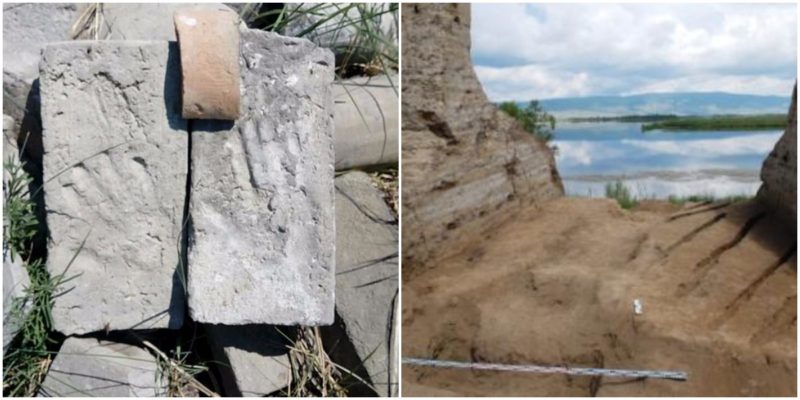Por-Bazhyn (also known as Por-Bajin, Por-Bazhyng) is a mysterious ruined structure located on a small island in the middle of the remote Lake Tere-Khol, which is located high in the severe Sengelen mountains of southern Tuva, in the far south of Siberia.
The site is approximately 5 miles west of the small village of Kungurtuk in the southwestern part of the Republic of Tuva, near the Russian border with Mongolia, in a region almost completely untouched by the modern civilization. The name Por-Bazhyn comes from Tuvan language and literally means “clay house.”
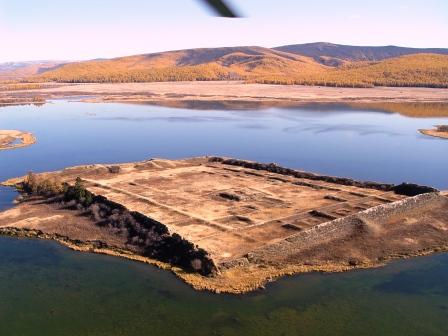
The structure has high outer walls and a rectangular shape covering an area of approximately seven acres, which is almost the entire island. Inside there are the ruins of more than 30 buildings. Because of its plan and its fortress-like design, archaeologists initially believed it was a fortress, although they later discovered otherwise. It was built very far away from any large settlements or important trade routes, and fortresses were primarily built to protect routes or towns.
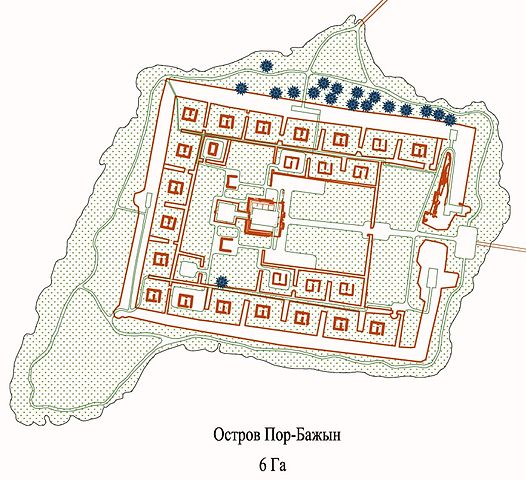
Historical documents and the archaeological excavations made thus far show several periods of occupation of the site. It is believed that the structure was built as an Uyghur summer palace in the 8th century AD, and very soon it was adapted and transformed into a Buddhist or Manichaean monastery, which would explain the isolated location.
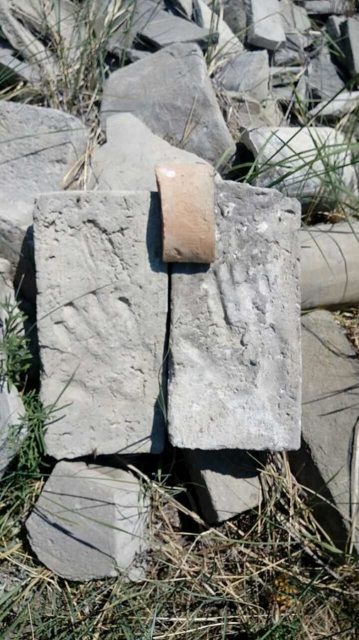
Some scholars even believe that it was an ancient astronomical observatory and ritual site. But no one knows for sure what Por-Bazhyn’s true purpose actually was, and no hypothesis has been conclusively demonstrated to be true.
The discoveries also show that after a short time period of settlement, the site was abandoned. The structure has been finally almost entirely destroyed by an earthquake and subsequent fire. The architectural style and the construction methods applied to the structure suggest that there was significant Chinese influence; the central complex of Por-Bazhyn was constructed within the Tang building tradition, while the outer walls were built using the hangtu technique (rammed-earth layers in a wooden frame).

In the interior, there are two large yards, a central building complex, and a series of connected smaller yards placed along the northern, western, and southern walls. The western and eastern outer walls are well preserved in comparison to the other parts of the structure. On the center of the eastern wall is located the main gate. The gate has two gate towers, one on each side, with ramps leading up to them. It was found that the main gate had three gateways made of timber construction that burned down in the late Middle Ages. The maximum height of the surviving outer walls is 33 feet and the maximum height of the surviving inner walls is between 3.3 and 4.9 feet.
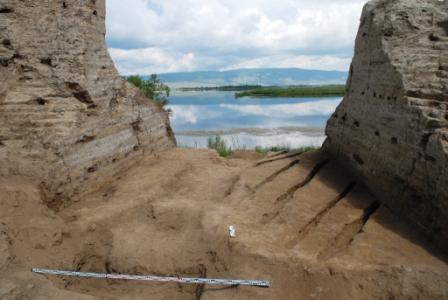
Por-Bazhyn has been well known in academic circles since the 18th century but was only systematically explored for the first time in 1891. More methodical excavations on various portions of the site were made from 1957 till 1963, with the Russian archaeologist S.I. Vajnstejn as a head of the project. In 2007-2008 extensive research was undertaken by the Fortress Por-Bajin Foundation. The project involved many scholars, scientists, and experts from different fields in the Russian Academy of Sciences.
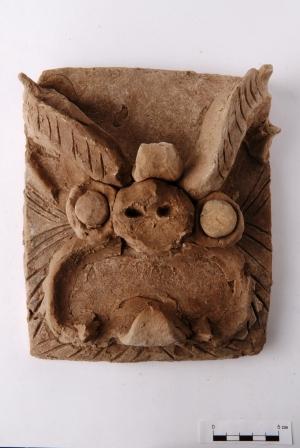
Because of its location, the site is linked to the Uyghur culture, and because of the era in which it was constructed and the similarities to the palace complex of Karabalgasun, which was the cultural, administrative, and religious center of the Uyghur Khaganate, Vajnstein believed that Por-Bazhyn must be a palace. Geophysicists studying the area in 2007/2008 discovered that the island is basically a plug of permafrost in the shallow waters of the lake that rose from the lake several centuries before the structure was erected on it.

There is also some evidence that the clay from the lake bed around the lake was used for the walls. The geomorphological research at the area reveals signs of at least two earthquakes. The first happened during the construction of the structure in the 8th century, and the second occurred in the late Middle Ages and was devastating.
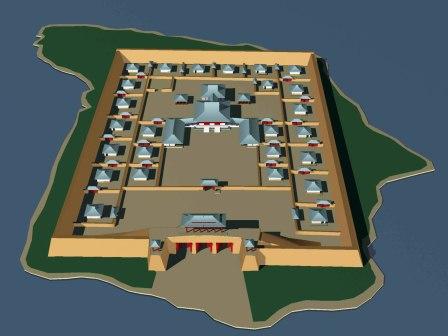
By that time, however, Por-Bazhyn had already been abandoned. On the site, there have been no discoveries of human remains or graves. The reasons why the site was abandoned are unknown, but some scholars suggest that the harsh climate conditions were contributing factors. The future of Por-Bazhyn is under risk. As a result of warmer climate, the permafrost on which the structure sits has been steadily melting over the past century. The water level of the lake is slowly rising. There is a chance that the structure could be swallowed by the lake waters by around 2100.
